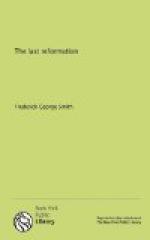Every historian knows that pagan Rome was succeeded by papal Rome. The transfer is expressed thus: “And the dragon gave him his power, and his seat, and great authority” (verse 2). The rising papacy succeeded to the power and authority formerly exercised by pagan Rome; and when the political capital was removed to Constantinople, the pope was left in possession of the ancient seat of empire and government. “The beast” therefore refers to Rome either as a political power or as an ecclesiastical power, the context determining whether the political or the ecclesiastical phase is meant in a given instance. It will be observed, however, that the leading actions ascribed to this beast are derived from its human characteristics, pointing unerringly to the papacy for its fulfilment.
This beast the world admired. “And they worshiped the dragon which gave power unto the beast; and they worshiped the beast, saying, Who is like unto the beast? who is able to make war with him?” The expression “worshiped the dragon” shows that reference is made to the dragon, not as a political power, but as a religious power. This worship of the dragon by those who worshiped the beast which succeeded the dragon was fulfilled by the perpetuation under the papacy of the rites and ceremonies of paganism. Roman Catholicism is a strange amalgamation of Judaism, Christianity, and heathenism. The part derived from paganism occupies such a prominent place in Roman Catholic practise and worship that we can not fail to observe its close resemblance to, if not absolute identity with, heathenism. Just to mention a few points:
1. The high priest of the pagan religion was called Pontifex Maximus, and he claimed spiritual and temporal authority over men. The pope of Rome borrowed the title and made the same claims, even being clad in the same attire.
2. The heathen wore scapulars, medals, and images for personal protection. Romanists wear the same things for the same purpose.
3. Pagans, by an official process called deification, raised men, after their death, to a dignified position and accorded them special honors and worship. Papists, by a similar process called canonization, exalt men after their death to the dignity of saints and then offer up prayers to them.
4. Papists’ adoration of idols and images was also borrowed direct from the heathen; for all such practises were absolutely forbidden by the Mosaic law and had no place in primitive Christianity.
5. Their religious orders of monks and nuns were also in imitation of the vestal virgins of antiquity.




